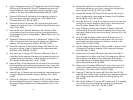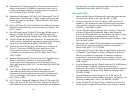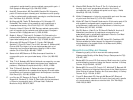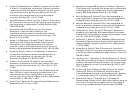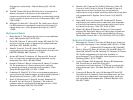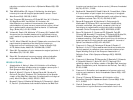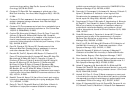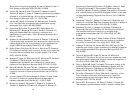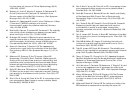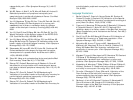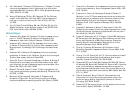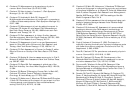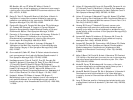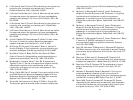
55
the time trade-off. Journal of Clinical Epidemiology 60(10):
1029-1033, 10/2007.
46. Radbruch L, Loick G, Kiencke P, Lindena G, Sabatowski R,
Grond S, Lehmann KA, Cleeland CS. Validation of the
German version of the Brief Pain Inventory. J Pain Symptom
Manage 18(3): 180-187, 9/1999.
47. Radbruch L, Sabatowski R, Loick G, Jonen-Thielemann I, Elsner
F, Hormann E. [MIDOS--validation of a minimal
documentation system for palliative medicine]. Schmerz
14(4): 231-239, 8/2000.
48. Raichle KA, Osborne TL, Jensen MP, Cardenas D. The reliability
and validity of pain interference measures in persons with
spinal cord injury. J Pain 7(3): 179-186, 3/2006.
49. Rutledge DN, Jones CJ. Effects of topical essential oil on
exercise volume after a 12-week exercise program for women
with fibromyalgia: A pilot study. Journal of Alternative and
Complementary Medicine 13(10): 1099-1106, 12/2007.
50. Saxena A, Mendoza T, Cleeland CS. The assessment of
cancer pain in north India: the validation of the Hindi Brief
Pain Inventory--BPI-H. J Pain Symptom Manage 17(1): 27-41,
1/1999.
51. Seidman AD, Portenoy R, Yao TJ, Lepore J, Mont EK,
Kortmansky J, Onetto N, Ren L, Grechko J, Beltangady M, .
Quality of life in phase II trials: a study of methodology and
predictive value in patients with advanced breast cancer
treated with paclitaxel plus granulocyte colony-stimulating
factor. J Natl Cancer Inst 87(17): 1316-1322, 9/1995.
52. Serlin RC, Mendoza TR, Nakamura Y, Edwards KR, Cleeland
CS. When is cancer pain mild, moderate or severe? Grading
pain severity by its interference with function. Pain 61(2): 277-
284, 5/1995.
53. Shin H, Kim K, Young HK, Chee W, Im EO. A comparison of two
pain measures for Asian American cancer patients. West J
Nurs Res 29(5): 545-560, 8/2007.
56
54. Shin H, Kim K, Young HK, Chee W, Im EO. A comparison of two
pain measures for asian american cancer patients. West J
Nurs Res 30(2): 181-196, 3/2008.
55. Smith BH, Torrance N, Bennett MI, Lee AJ. Health and Quality
of Life Associated With Chronic Pain of Predominantly
Neuropathic Origin in the Community. Clin J Pain 23(2): 143-
149, 2/2007.
56. Su L, Tucker R, Frey SE, Gress JO, Chan IS, Kuter BJ, Guess HA.
Measuring injection-site pain associated with vaccine
administration in adults: a randomised, double-blind,
placebo-controlled clinical trial. J Epidemiol Biostat 5(6): 359-
365, 2000.
57. Tan G, Jensen MP, Thornby JI, Shanti BF. Validation of the Brief
Pain Inventory for chronic nonmalignant pain. J Pain 5(2): 133-
137, 3/2004.
58. Tittle MB, McMillan SC, Hagan S. Validating the brief pain
inventory for use with surgical patients with cancer. Oncol
Nurs Forum 30(2): 325-330, 3/2003.
59. Tyler EJ, Jensen MP, Engel JM, Schwartz L. The reliability and
validity of pain interference measures in persons with cerebral
palsy. Arch Phys Med Rehabil 83(2): 236-239, 2/2002.
60. Tzeng JI, Chang CC, Chang HJ, Lin CC. Assessing Analgesic
Regimen Adherence with the Morisky Medication Adherence
Measure for Taiwanese Patients with Cancer Pain. J Pain
Symptom Manage, 4/2008.
61. Uki J, Mendoza T, Cleeland CS, Nakamura Y, Takeda F. A brief
cancer pain assessment tool in Japanese: the utility of the
Japanese Brief Pain Inventory--BPI-J. J Pain Symptom Manage
16(6): 364-373, 12/1998.
62. Wang XS, Mendoza TR, Gao SZ, Cleeland CS. The Chinese
version of the Brief Pain Inventory (BPI-C): its development
and use in a study of cancer pain. Pain 67(2-3): 407-416,
10/1996.
63. Williams VS, Smith MY, Fehnel SE. The validity and utility of the
BPI interference measures for evaluating the impact of



